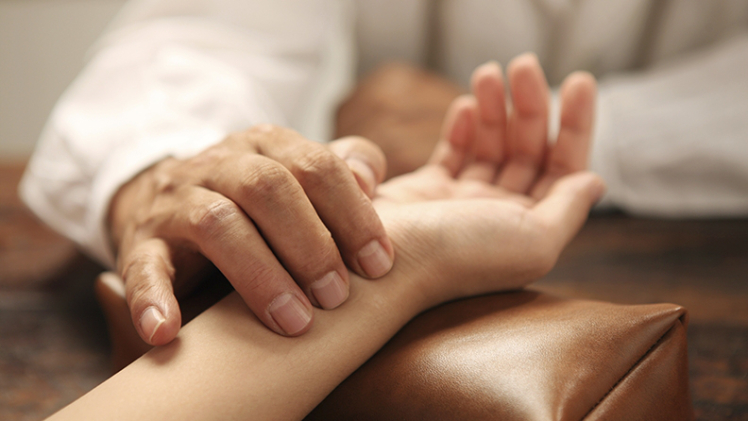Acupuncture: An Ancient Treatment for Modern Ails
In traditional Chinese medicine, acupuncture needles provide protection and relief from illness.

“Basically, acupuncture consists of the stimulation of certain points on the body, just beneath the surface of the skin,” explains Robert F. Lenahan, a state certified acupuncturist with a practice in Point Pleasant Borough. The points lie along channels – known as meridians – which have been mapped by Chinese acupuncturists over the past 5,000 years. Through the 14 main meridians, which correspond to internal organ systems, flows the life forc known as “Chi” (pronounced chee).
According to traditional acupuncture, the physical manifestations of Chi are respiration, body warmth and locomotion. Each organ system generates its own level of Chi, and illnesses occur because of imbalances of the life force within the body.
Chi diminishes throughout life, Lenahan says. When there is no Chi, there is no life. Stimulation of the acupuncture points allows doctors of oriental medicine to correct imbalances of Chi. “Acupuncture is tonic for the Chi,” he says.
Acupuncturists traditionally use solid steel needles as fine as a human hair to stimulate the Chi. Unlike hypodermic needles, which are thin tubes, acupuncture needles are flexible and come to very small, sharp points.
“Because a tube can’t be brought to a point”, Lenahan says, “hypodermics have to have a sharp cutting edge with which they tear tissue to enter the body. Acupuncture needles, because of their nature, are able to move through the skin without tearing the tissue.”
What Will Happen When You Go To An Acupuncturist?
 For a new patient, acupuncture treatment starts with a consultation visit. During that initial consultation, Dr. Lenahan compiles a complete medical history of the patient as well as a thorough evaluation including the oriental method of pulse diagnosis and tongue diagnosis. From that history, clinical observation and from the symptoms reported by the patient, he then creates an acupuncture prescription of points to be utilized for treatment, as well as a treatment plan. This prescription specifies the diagnosis of the ailment in terms of Chi imbalance.
For a new patient, acupuncture treatment starts with a consultation visit. During that initial consultation, Dr. Lenahan compiles a complete medical history of the patient as well as a thorough evaluation including the oriental method of pulse diagnosis and tongue diagnosis. From that history, clinical observation and from the symptoms reported by the patient, he then creates an acupuncture prescription of points to be utilized for treatment, as well as a treatment plan. This prescription specifies the diagnosis of the ailment in terms of Chi imbalance.
When the prescription is determined, the patient begins treatment.
“A typical treatment session lasts between 30 and 40 minutes,” Lenahan says. “Many people fall asleep during treatment, inf fact. It’s a very relaxing time. It as been shown that acupuncture releases endorphins, chemicals which are the body’s natural opiates.”
Opiates are a group of drugs, deriving their name from opium, which produce a sleepy, relaxed state. However, acupuncture is natural medicine and therefore there is no physical addiction, nor side effects.
The number of acupuncture sessions necessary to cure the illness depends on the nature and severity of the illness, Lenahan says. For a chronic problem, he says, as many as 12 treatments may be necessary. For an acute condition, only one or two treatments may be needed. This, of course, varies patient to patient.
The healing effects of acupuncture are more subtle than those of invasive, western medical procedures. The focus of oriental medicine is on health maintenance, rather than crisis intervention.
Lenahan says, Acupuncture, through its stimulation of the body’s essential life-force, acts to influence the body’s basic ability to repair and regenerate itself.
“Our patients say they are getting fewer colds and that the colds they do get are less severe. Allergy patients say they suffer from less hay fever and environmental sensitivities. Patients also say they seem to get more warning symptoms prior to coming down with a cold, so they are better able to take immediate steps to prevent it from developing.” Lenahan says. There are many herbal prescriptions that would apply to this category.
Originally published by Tony Frasca
in The Journal, a NJ newspaper, on 3/2/1988